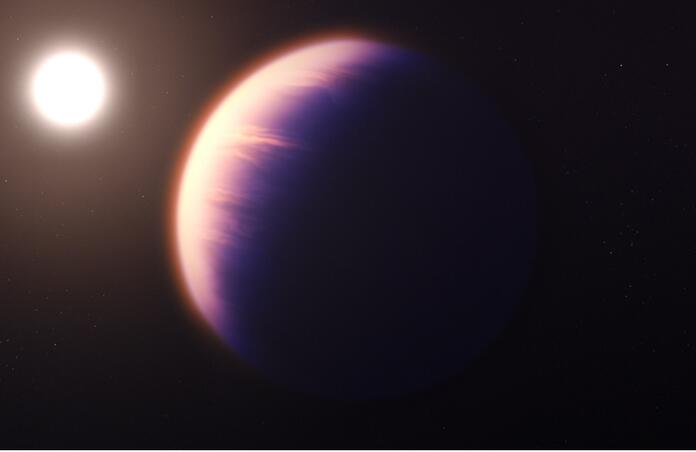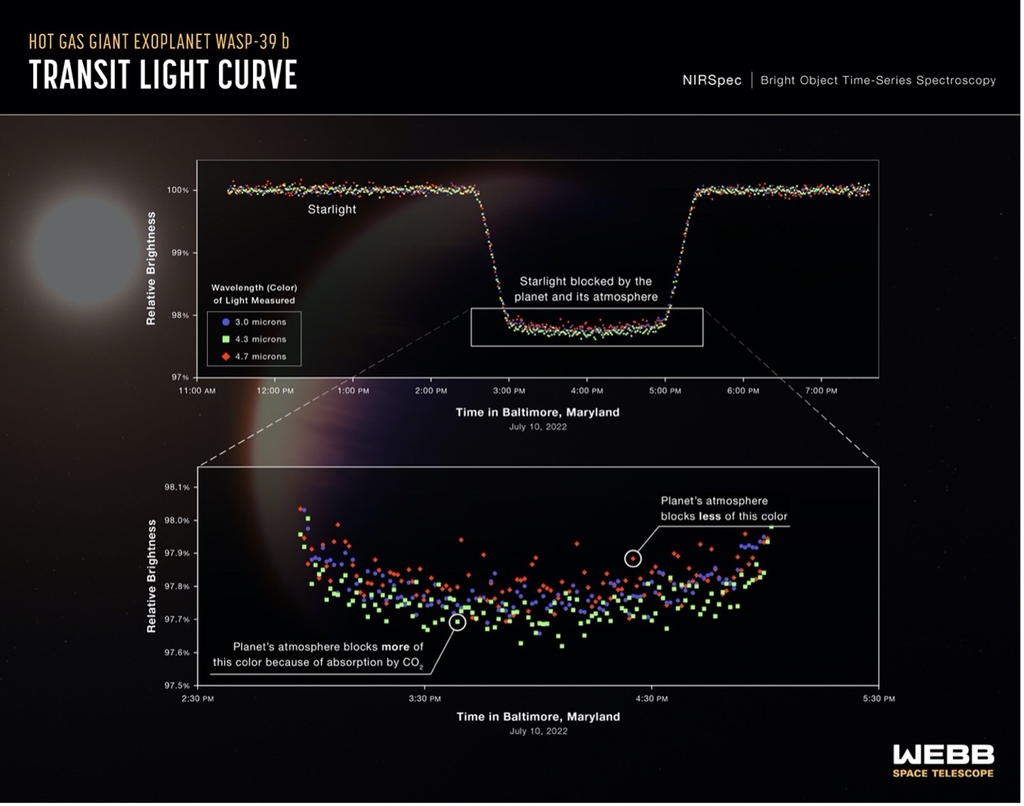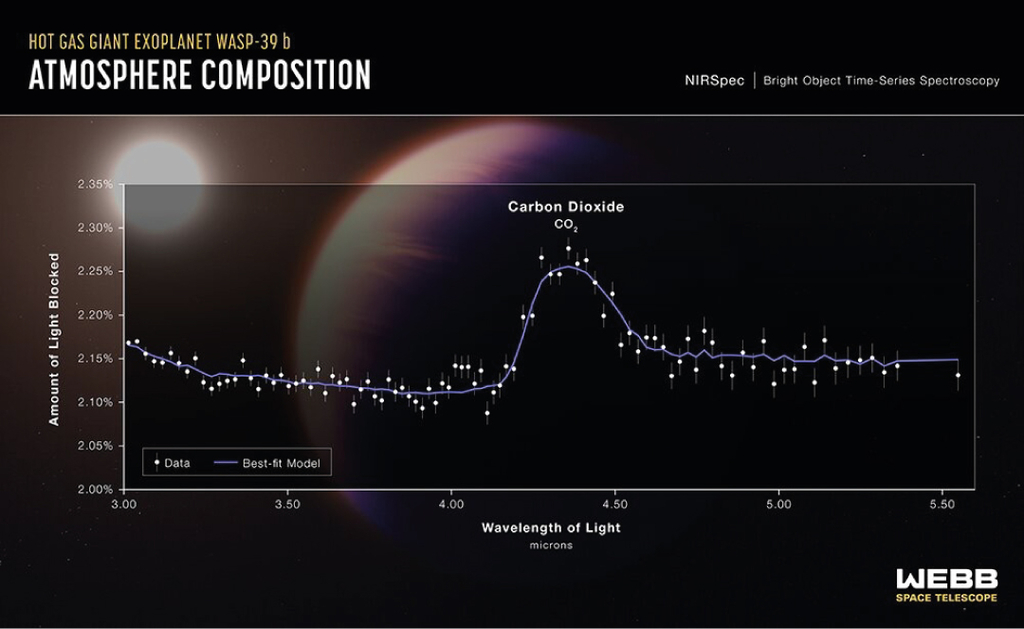Webb Telescope Makes First Definitive detection of Carbon Dioxide on an Alien World

NASA’s James Webb Space Telescope (JWST) has captured the first detection of carbon dioxide in the atmosphere of exoplanet WASP-39b, making a breakthrough in the research of these alien worlds.
WASP-39b is a hot gas giant around the mass of Saturn and a diameter 1.3 times that of Jupiter. The gas giant orbits extremely close to its host star- a sun-like star- at 1/8 the distance between the Sun and Mercury at a rapid rate of 4 Earth days. Due to its close orbit, WASP-39b reaches extremely high temperatures of 900°C which may explain its vast size despite it being a similar mass to Saturn. The exoplanet was discovered in 2011 due to its transits – when a planet passes in front of its host star, there is a periodic drop in brightness.

on the 10th July, 2022.
Earlier observations from the Hubble and Spitzer telescopes discovered the presence of water vapour, sodium and potassium in WASP-39b’s atmosphere, and now Webb has added carbon dioxide to the mix. These detections were made using the method of spectroscopy: during a transit, some starlight is eclipsed by the planet causing the dimming, but some is transmitted through the planets’ atmosphere revealing clues to its composition. Carbon dioxide will absorb at specific wavelengths and shows up as a broad peak in the transmission spectrum between 4.1 and 4.6 microns, which is exactly what appeared in the spectrum for WASP-39b. This is a major breakthrough, since this is the first clear evidence for the presence of carbon dioxide ever detected in a planet outside our solar system!

The research team used Webb’s Near Infrared Spectrograph (NIRSpec) to make these observations, and no other observatory has measured such a minute difference in the brightness across the 3-5.5 micron range in an exoplanet transmission spectrum before. The detection of carbon dioxide is a crucial and sensitive tracer to uncovering the origin of a planet and its subsequent evolution, and is an important component of the atmospheres of planets in our solar system. The molecule is useful in gaseous form for both rocky and gas giant planets, since we can detect it on small rocky planets and it can be used as a sign for the abundance of heavier elements in the atmosphere of gas giants, otherwise known as the metallicity.
Along with the exoplanet being around the same mass as Saturn, it was found that WASP-39b has a similar composition, with both planets having a metallicity 10 times greater than the sun. This raises questions for astronomers: could all Saturn -mass planets share a similar metallicity? Only time will tell, since the NIRSpec observation of WASP-39b is only one small part of a wider investigation. JWST will make more observations of the planet using multiple Webb instruments in addition to a number of other planets, helping us understand how planets form.
The paper detailing the discovery was accepted for publication by Nature, and can be read here.
--
Cover image: NASA, ESA, CSA, and J. Olmsted (STScI)
Image credits:
- Illustration: NASA, ESA, CSA, and L. Hustak (STScI); Science: The JWST Transiting Exoplanet Community Early Release Science Team
- NASA, ESA, CSA, Leah Hustak (STScI), Joseph Olmsted (STScI)
